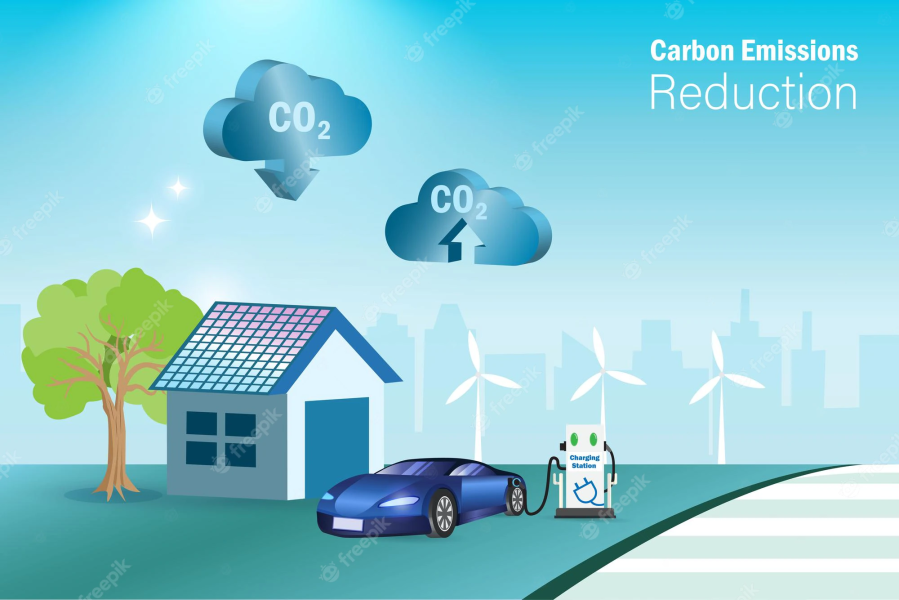
Climate change is a pressing global issue, and the UK is at the forefront of the battle with ambitious emissions reduction targets. A significant part of this fight is managing carbon emissions from homes, which account for a substantial chunk of the UK’s total carbon footprint. This article explores reliable strategies and technologies you can use to reduce your home’s carbon emissions, save on energy costs, and contribute to the global climate change solution.
1. Understanding the UK’s Climate Change Efforts
1.1 The UK’s Climate and Energy Policy
The UK government is committed to achieving net-zero emissions by 2050, a target that demands concerted efforts from all sectors of society. The country’s climate and energy team spearheads these initiatives, developing policy evidence, advocating for decarbonisation solutions, and ensuring the government meets its carbon budgets. The focus is on power, transport, and buildings, which together account for 84% of UK emissions.
The UK climate team works in coalition with experts within WWF, other NGOs, and the private sector to protect the Climate Change Act. They commission research from independent experts and engage representatives across all political parties to secure support for their initiatives.
1.2 The Role of Buildings in Carbon Emissions
Buildings, including homes, are the third largest producers of carbon emissions in the UK. Homes alone account for 13% of the UK’s total carbon emissions. Given that England has one of the oldest building stocks in Europe, with a fifth of all homes being over a century old, reducing the carbon emissions from these buildings is a significant part of the fight against climate change.
2. Making Your Home More Energy Efficient
2.1 Small Behaviour Changes
One of the simplest ways to reduce your home’s carbon emissions is by making small behaviour changes. A study found that between 9% and 16% of UK household energy usage is from devices plugged in on standby, costing us around £86 (€100) a year. By turning off your appliances when you’re not using them, you can save energy and money.
2.2 Employing Energy-Saving Technologies
Companies like Tutum Energy are pioneering retrofit technologies such as Voltage Optimisers, which can reduce your electricity usage by up to 20%. These technologies are relatively cheap, easy to install, and can significantly reduce your carbon footprint and energy costs.
2.3 Conserving Heat
Insulating your home is another cost-effective solution for reducing carbon emissions. A report from Nottingham Trent University and the IET found that insulating homes in the UK is critical if we’re to meet our target of net-zero emissions.
3. Reducing Carbon Emissions from Heating
Heating accounts for an average of 2.7 tonnes of CO2 emissions per home per year in the UK. The type of fuel source you use for heating can significantly affect your carbon emissions.
3.1 Choosing Environmentally Friendly Fuel Sources
Some fuel sources are more environmentally friendly than others. For instance, electric boilers are much more eco-friendly than gas boilers because they don’t burn fossil fuels to create heat. They are also extremely energy-efficient, with most models having an efficiency rating of 99%.
3.2 Regular Maintenance of Heating Systems
If you’re not in a position to switch to a more eco-friendly heating system, ensuring that your current system is properly maintained can also help reduce emissions. Regular servicing by a Gas Safe boiler engineer will ensure your system is as energy-efficient as possible.
4. Greening Your Home
Beyond energy conservation and efficiency, there are other ways to reduce your home’s carbon emissions and positively impact the environment.
4.1 Planting Eco-Friendly Plants
If you have a garden, consider planting flowers that provide pollen to bees, such as foxgloves and lavender. These plants contribute positively to the ecosystem.
4.2 Using Oxygen-Boosting Indoor Plants
Inside your home, consider plants that boost oxygen levels. Spider plants and aloe vera are great choices because they not only produce clean oxygen but also help remove harmful gases including formaldehyde and carbon monoxide.
5. Conclusion
The fight against climate change is a collective responsibility. While homes contribute significantly to greenhouse gases, there are many ways we can reduce these harmful emissions and even introduce cleaner oxygen back into the environment. The bonus is that many of these solutions also save us money – a win-win situation for everyone.
Let’s all do our part to make our homes greener and contribute to the global fight against climate change.